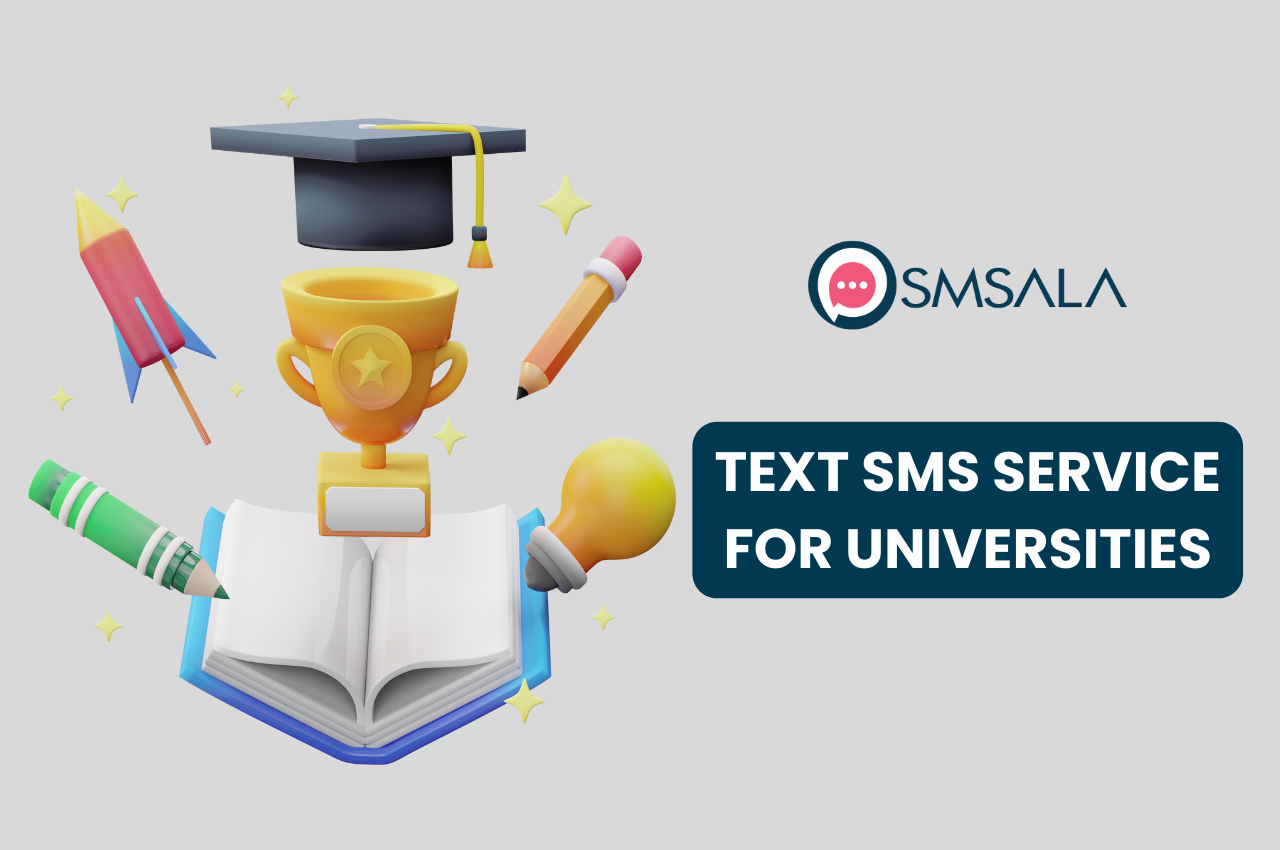Mobile is just about how the world goes today. From the perspective of this era, the sun will stop rising as mobile networks crash and burn. Mobile phones are especially useful for students. It is very necessary, and they cannot leave their house without it. These devices are integral to their daily lives, serving as tools for communication, learning, and social interaction. As technology continues to evolve, the reliance on mobile phones for educational and personal purposes grows stronger.

Students use their mobile phones for taking notes, research, communication, social networking, and more. Numerous text messages are sent and received daily among subscribers. It is no wonder that many colleges use SMS services for their students and teachers. These services provide a quick and efficient way to disseminate important information, ensuring that everyone stays informed and connected. By leveraging SMS technology, educational institutions can enhance their communication strategies and provide a better experience for both students and faculty.
How Text SMS Service Benefits Students:
- Alert System
Consider how circumstances could have been avoided with events such as the Virginia Tech massacre where 32 students and faculty were victims. The entire campus can be alerted with a simple push of the send button to warn of danger inside and even outside the premises of the college. This immediate communication can save lives by providing timely warnings that allow students and staff to take necessary precautions. Text messages are a reliable way to disseminate urgent alerts quickly and efficiently, reaching a wide audience within seconds.
Students check their messages directly, and this appears to be the fastest and most effective alert system because recipients can easily forward the messages to everyone in their contact list. This viral nature of SMS ensures that critical information spreads quickly and reaches a broad audience within a short time frame. In emergency situations, every second counts, and the speed and reach of SMS can make a significant difference in ensuring the safety and well-being of students and staff.
This is the main reason why colleges use text messages for the protection and safety of everyone.
- Calamity & Weather Warning
Hurricanes, tsunamis, earthquakes, and many calamities happen all over the world and often cause a lot of material damage and a massive death toll. It is undeniable that these setbacks are taking place at an alarming rate and no one is left unharmed. The reality is that calamities occur simultaneously in different states and countries. The use of text messages to warn students and teachers about protection and prevention makes a big difference. Timely alerts can provide essential information on how to stay safe and what actions to take during emergencies. For example, students can be informed about evacuation procedures, safety protocols, and other critical measures to protect themselves during a natural disaster.
- Campus and Club Bulletin
Text messaging services are useful for distributing updates and information such as class schedule updates, club sessions or training sessions, direct messages to the class, reminders, and much more. A professor can use the service to inform his students about possible reminders or cancellations at the last minute. The department head can easily send messages for emergency meetings and other related stuff. The ability to quickly disseminate information helps maintain smooth operations and ensures that everyone is on the same page. This real-time communication is invaluable in an educational setting, where schedules and plans can change rapidly.
Because text messages are received in real-time, all news, updates, and especially alerts are received immediately. Time is very crucial, and mass text messages reach where other tech media cannot. No internet connection is required to receive the notifications, making it a reliable communication channel even in areas with poor internet connectivity. It is a cheap medium that can benefit both the college and the students at the same time, ensuring that important messages are delivered without delay. This accessibility is particularly important in emergency situations, where quick and reliable communication is essential.
With Bulk SMS software in place, universities of applied sciences can easily integrate text messages into their system. It is so user-friendly that anyone can send messages without being dependent on an operator. Ease of use, reliability, and speed are the main reasons why colleges use SMS services. This technology empowers educational institutions to maintain effective communication channels, enhancing the overall student experience and administrative efficiency. By streamlining communication processes, colleges can ensure that students receive timely and accurate information about important events, deadlines, and other critical updates.
Marketing channels are changing, and if you are looking for the best way to reach your audience and get the best response, we recommend you try SMS Marketing. By incorporating SMS into your marketing strategy, you can ensure that your messages are seen and acted upon promptly, driving higher engagement and conversions. SMS marketing allows you to reach your audience directly, bypassing the noise and clutter of other communication channels. Whether you are promoting an event, announcing a new course, or sharing important updates, SMS ensures that your message is delivered quickly and effectively.
We offer 20 free credits to new users to get started with our Text SMS service. Visit our site for more information about this free opportunity and add it to your marketing channels. Experience the benefits of SMS technology and see how it can transform your communication strategies, ensuring that you stay connected with your audience effectively and efficiently.
Additional Benefits of SMS Services in Education
In addition to the aforementioned uses, SMS services offer several other benefits that can enhance the educational experience for both students and faculty:
1. Event Notifications and Reminders:
Colleges often host a variety of events, including workshops, seminars, guest lectures, and social gatherings. SMS can be used to notify students about upcoming events and send reminders as the date approaches. This ensures that students are well-informed and can make arrangements to attend events that interest them. Timely reminders can also help increase attendance and participation in college activities.
2. Academic Alerts:
Professors can use SMS to send academic alerts to students, such as reminders about assignment deadlines, exam schedules, and project submissions. This helps students stay organized and on track with their academic responsibilities. Additionally, SMS can be used to inform students about changes in class schedules or locations, ensuring that they are aware of any updates in real-time.
3. Attendance Tracking:
Attendance is an important aspect of student performance and engagement. SMS can be used to notify students about their attendance status, encouraging them to maintain regular attendance and participate actively in their classes. This can be particularly useful for students who may be at risk of falling behind due to irregular attendance.
4. Career Services and Job Opportunities:
Colleges can use SMS to inform students about career services, job fairs, internship opportunities, and other career-related events. This helps students stay informed about opportunities that can enhance their professional development and career prospects. By providing timely information about job openings and career resources, colleges can support their students’ transition from education to employment.
5. Financial Aid and Scholarship Notifications:
Financial aid and scholarships are critical for many students. SMS can be used to notify students about application deadlines, eligibility requirements, and award announcements. This ensures that students have access to the information they need to apply for financial support and take advantage of available scholarships. Timely notifications can help students meet deadlines and secure the financial assistance they need to pursue their education.
6. Health and Wellness Updates:
Colleges can use SMS to share important health and wellness information with students, such as updates on vaccination clinics, mental health resources, and wellness programs. This helps promote a healthy campus environment and ensures that students have access to the resources they need to maintain their well-being. Health and wellness updates can also include information about safety protocols, COVID-19 guidelines, and other measures to protect the health of the campus community.
Implementing SMS Services in Educational Institutions
Implementing SMS services in educational institutions involves several key steps to ensure successful integration and effective communication:
1. Choose a Reliable SMS Service Provider:
Select a reputable SMS service provider that offers reliable, user-friendly, and cost-effective solutions. Ensure that the provider has experience working with educational institutions and can offer features tailored to the needs of colleges and universities. Look for providers that offer bulk SMS capabilities, API integration, and robust reporting tools to track the performance of your SMS campaigns.
2. Integrate SMS with Existing Systems:
Integrate the SMS service with your institution’s existing systems, such as student information systems, learning management systems, and administrative platforms. This ensures seamless communication and allows for automated messaging based on specific triggers, such as assignment deadlines or event reminders. Integration with existing systems can streamline communication processes and reduce the administrative burden on staff.
3. Collect and Manage Student Contact Information:
Ensure that you have accurate and up-to-date contact information for all students. Implement a process for collecting, verifying, and managing student phone numbers to ensure that your messages reach the intended recipients. Encourage students to update their contact information regularly and provide an easy way for them to do so through online portals or mobile apps.
4. Obtain Consent and Ensure Compliance:
Obtain explicit consent from students to receive SMS messages and ensure compliance with relevant regulations, such as the Telephone Consumer Protection Act (TCPA) and the General Data Protection Regulation (GDPR). Provide clear opt-in and opt-out options and respect students’ communication preferences. Compliance with regulations not only protects your institution from legal issues but also builds trust with students and their families.
5. Create and Schedule Messages:
Create clear, concise, and relevant messages tailored to the needs and interests of your students. Schedule messages to be sent at appropriate times to maximize engagement and avoid inconvenience. Use A/B testing to experiment with different message formats, timing, and content to determine what works best for your audience.
6. Monitor and Evaluate Performance:
Track the performance of your SMS campaigns using analytics tools provided by your SMS service provider. Monitor key metrics such as delivery rates, open rates, click-through rates, and student feedback. Use this data to evaluate the effectiveness of your campaigns and make data-driven decisions to optimize your communication strategy. Regularly review and refine your SMS campaigns to ensure that they continue to meet the needs of your students and achieve your communication goals.
By implementing these steps and leveraging the benefits of SMS technology, educational institutions can enhance their communication strategies, improve student engagement, and ensure that important information is delivered promptly and effectively. SMS services offer a powerful and efficient way to connect with students, providing them with the information and support they need to succeed in their academic journey.



